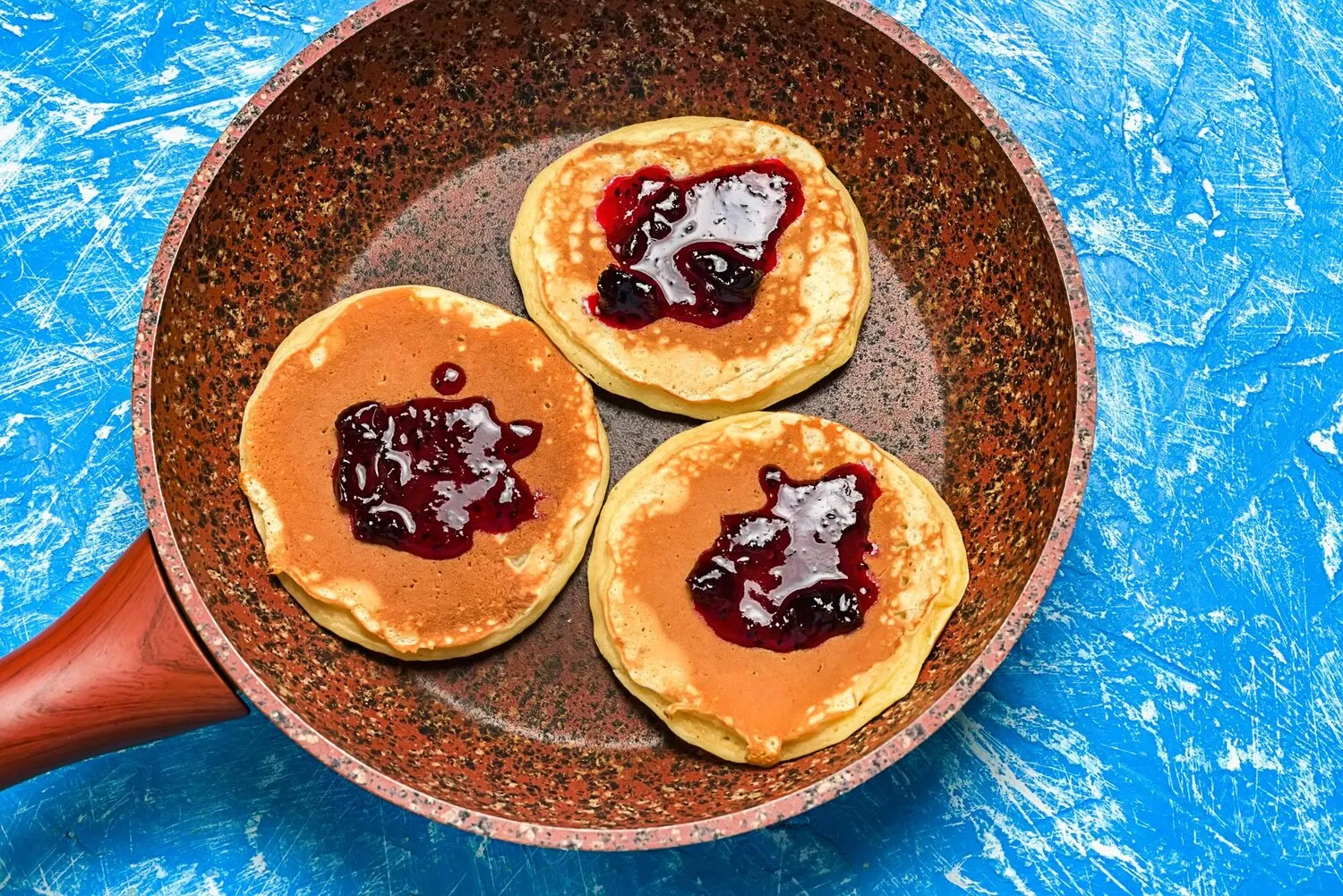
American Pancakes
Stack of fluffy American pancakes, often served with various toppings like fruit, syrup, and whipped cream.
Nutrition Facts
* The % Daily Value (DV) tells you how much a nutrient in a serving of food contributes to a daily diet. 2,000 calories a day is used for general nutrition advice.
Pancakes have a long history, with variations found across many cultures. The American pancake, as we know it today, evolved from earlier griddle cakes brought to America by European settlers. These were adapted using locally available ingredients and cooking methods, gradually transforming into the fluffy, leavened cakes we recognize as American pancakes.
American pancakes are deeply ingrained in American breakfast culture, often associated with family gatherings, weekend mornings, and a sense of comfort and nostalgia.
Breakfast Staple
Pancakes are a quintessential American breakfast food, frequently enjoyed as part of a leisurely weekend brunch or a quick weekday morning meal.
Family Tradition
Making and eating pancakes is often a family tradition, with recipes passed down through generations and customized with favorite toppings.
Brunch Culture
Pancakes are a central element of American brunch culture, often served alongside other breakfast favorites like bacon, eggs, and waffles.
IHOP Influence
The International House of Pancakes (IHOP) has played a significant role in popularizing pancakes and introducing a wide variety of flavors and toppings to American audiences.
American pancakes offer a delightful balance of sweet and savory flavors, primarily characterized by a subtle sweetness enhanced by various toppings.
The base flavor is subtly sweet, coming from the flour, sugar, and a touch of vanilla extract often added to the batter. The use of baking powder or baking soda contributes to the airy and fluffy texture, preventing a dense, heavy flavor. The cooked pancake itself has a slightly buttery or nutty note, depending on the cooking fat used. The versatility of the pancake lies in the toppings: maple syrup provides a classic, rich sweetness; fruits like berries, bananas, or peaches add a fresh, natural sweetness and tanginess; whipped cream contributes a creamy richness; and sometimes, savory toppings like bacon or sausage offer a salty and smoky contrast.
Don't Overmix the Batter
Overmixing develops gluten, resulting in tough pancakes. Mix until just combined, leaving some lumps.
Rest the Batter
Allowing the batter to rest for 5-10 minutes allows the gluten to relax and the baking powder to activate, resulting in a lighter texture.
Use a Hot Griddle
A preheated griddle or pan is essential for even cooking and a golden-brown color. Test the temperature by flicking a few drops of water onto the surface; they should sizzle and evaporate quickly.
Flip When Bubbles Appear
Flip the pancakes when bubbles start to form on the surface and the edges look set. Avoid flipping too early, as this can result in flat pancakes.
Keep Pancakes Warm
Keep cooked pancakes warm in a low oven (200°F/95°C) until ready to serve.
Explore additional Breakfast dishes and restaurants
Explore BreakfastDiscover top dining spots and culinary experiences in Den Haag.
Explore Den HaagLearn more about the food culture, restaurant scene, and culinary heritage of Netherlands.
Explore Netherlands